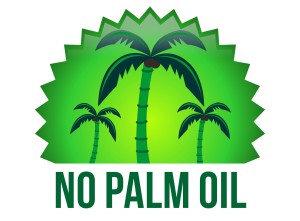Palm oil
Palm oil is one of the most important raw materials in the world. Palm oil is an exotic wax that comes from oil palms in South East Asia, Africa and America. Palm oil is found in almost 50% of supermarket products: from margarine and chocolate to washing products. Palm oil is also an integral ingredient in all types of cosmetic products because it offers so many advantages. Palm oil is popular as a base for ointments, creams and lotions because of its light buttery consistency. Palm oil restores the oil balance of dry and flaky skin and has the added advantage of giving it a smoother feel. Palm oil for cosmetic use is extracted from the seeds that are a waste by-product from the food industry. This raw material is the basis for a wide range of emulsifiers, fatty alcohol and lipids as well as cleansing surfactants.
With Palm Oil or Palm oil free?
Palm oil use has been criticised for some time even though this natural product has no negative qualities. The reason for the contention is that the Oil Palm only thrives in tropical regions where there are rain forests. A key player in the destruction of these rain forests is the clearing of large areas for huge palm oil plantations. Between 1990 and 2005 1.5 million hectares of rain forest were cleared in Indonesia alone. The biodiverse ancient forests, with all of their flora and fauna, have been destroyed to make room for palm oil monoculture. Studies have forecast that 98% of the rainforest in Malaysia and Indonesia will disappear in the next 15-20 years if drastic action is not taken to prevent it.
Not Palm Oil Free, but a bit More Sustainable ?
If you do not want to try to produce completely Palm Oil free, then you can at least ensure that you purchase fair-trade product. In the end, the cultivation of oil palm for palm oil extraction is one of the few sources of survival for small farmers in poor regions. But sustainability depends on the way the palm oil is produced; ideally this should be ecologically friendly, socially sustainable and still economically viable. Sadly this is still rarely the case. The WWF is significantly involved in The Round Table for Palm Oil (RSPO) which has developed a set of minimum standards for palm oil cultivation. The RSPO is not an „Organic Label“, but it does signify that the source plantation has voluntarily agreed to do more for environmental protection and human rights than one without the label. This palm oil is then sold as „RSPO certified“, and suggests a (more) sustainable source (e.g. Certification through UTZ https://utzcertified.org).
Most raw material suppliers declare their products to be compliant with the „Mass Balance Model“. This means that „ a specified mix of certified and non-certified palm oil will be controlled by an independent certifying body throughout the value chain up to end product stage.“ The products can then display the RSPO Logo and also include the claim „ increases the production of certified sustainable palm oil „ on their labelling. Most products also carry the term „MB“ or „mass balance“.
Buying palm oil free
It is not easy to recognise which products contain palm oil and which are palm oil free as palm oil is mostly not used in its raw form but as a processed ingredient. Terms such as Sodium Palmate, Isopropyl Palmitate, Palm and Palmic Acid which suggest palm oil, are confusing for consumers who want to buy palm oil free products. Labelling regulations have fortunately been introduced, but these apply to the food industry and not to cosmetics.
Environmentally friendly or regionally produced plant oils could in many cases provide a viable alternative to allow the creation of palm oil free cosmetics but there is a slow uptake in their production for this purpose. Soya, Rape and Coconut Oil are all good alternatives, although industrial scale cultivation of coconut palm would bring its own social and environmental problems.
Emulsifiers, Lipids and Fatty alcohols can also be produced from synthetic base oils but a significant number of customers prefer cosmetics with 100% natural ingredients so this is not a popular route to palm oil free products.
Using palm oil, only the C14-C18 bonds can be produced (INCI = Myristyl-, Cetyl-, Cetearyl- and Stearyl-). Behenyl bonds (C22) for example are palm oil free. A cosmetic that is palm oil free is not necessarily less effective than one containing palm oil. Environmentally aware customers know this and are choosing more and more to buy only palm oil free products; there are even apps for Mobile Phones listing palm oil free choices.
Palm Oil Free Cosmetics – The responsible alternative to Palm Oil
The destruction of the rain forests and the related extinction of rare and even not yet discovered animals and plants are of great concern to most consumers. Animals such as the Orang-utan and tigers are losing their natural habitat. The use of palm oil in cosmetics is not critical; there are many really good alternatives. On the other hand, palm oil is a wonderful natural ingredient with only good properties.
The problem lies in the thoughtless industrial cultivation of oil palm.
Were this to be properly and strictly controlled so that ecological and socially sustainable production became a matter of course, then the use of palm oil in foods and cosmetics would be fine. Realistically it is wise to follow the trend and consider developing palm oil free cosmetics as a whole or part of a range. Developing palm oil free formulations is a big challenge, especially when looking for the same sensory qualities. The time and money invested will be greater than if using palm oil, but to be able to claim that a products is palm oil free, and to be sure of contributing in some way to avoiding rain forest destruction could go a long way to convincing customers to choose your products.
